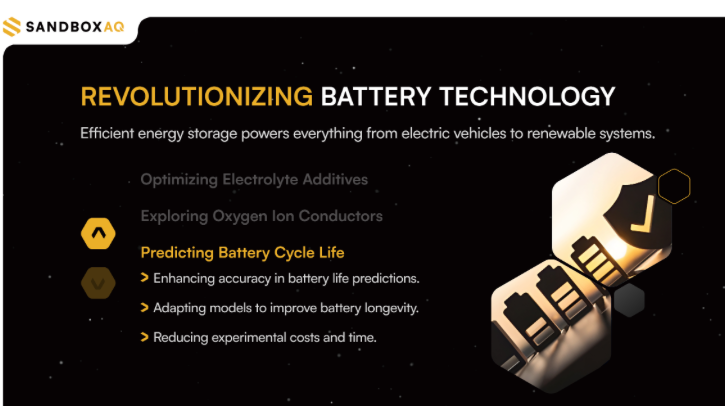SandboxAQ has reported that its large quantitative models (LQMs) can reduce the prediction time for lithium-ion battery end-of-life (EOL) calculations by 95%, and with good accuracy.
AI solutions provider SandboxAQ states that it offers 35 times greater accuracy and 50 times less data than traditional approaches to cycle life prediction – reducing the time for testing from months or years to just days. This was achieved by training models on more than four million hours of ultra-high precision coulometry (UHPC) cycle data collected by battery technology company Novonix.
The two companies will publish and discuss the results in joint presentations at The Battery Show this week and a journal paper published on arXiv.
Conventionally, new battery designs require 5-10 years of experimentation and testing to optimize energy density, longevity, safety, and rate capability, with 90% of designs failing to enter commercial development.
Leveraging Novonix’s data, SandboxAQ’s LQMs and quantitative AI simulations can identify subtle changes in charge-loss and efficiency variations across early battery cycles to gain insights into the electrochemical processes that drive long-term cell degradation. This approach enables accurate cycle life prediction across previously untested cell chemistries, and cycling conditions at different charge rates, cut-off voltages and temperatures.
SandboxAQ states that initial applications indicate that it could cut two to four years off the cell’s development timeline and save cell manufacturers millions of dollars in R&D costs. These savings could enable the advancement of battery technology across multiple industries and accelerate the adoption of new solutions to meet demand.
Dr Ang Xiao, technical lead, AI for materials science, at SandboxAQ, said, “The results from our collaboration with Novonix will help speed more effective and eco-friendly batteries and energy storage solutions to market for a broad range of commercial, industrial and public sector applications.”
Dr Stephen Glazier, director of technology at Novonix battery technology solutions division, said, “SandboxAQ’s novel approach of combining LQMs with our comprehensive UHPC data to accurately predict long-term performance could have significant implications on future cell development by helping manufacturers make better informed decisions ranging from optimizing designs, materials and chemistries, to warranty and time-to-spec predictions, to QA/QC metrics in manufacturing, and more.”


